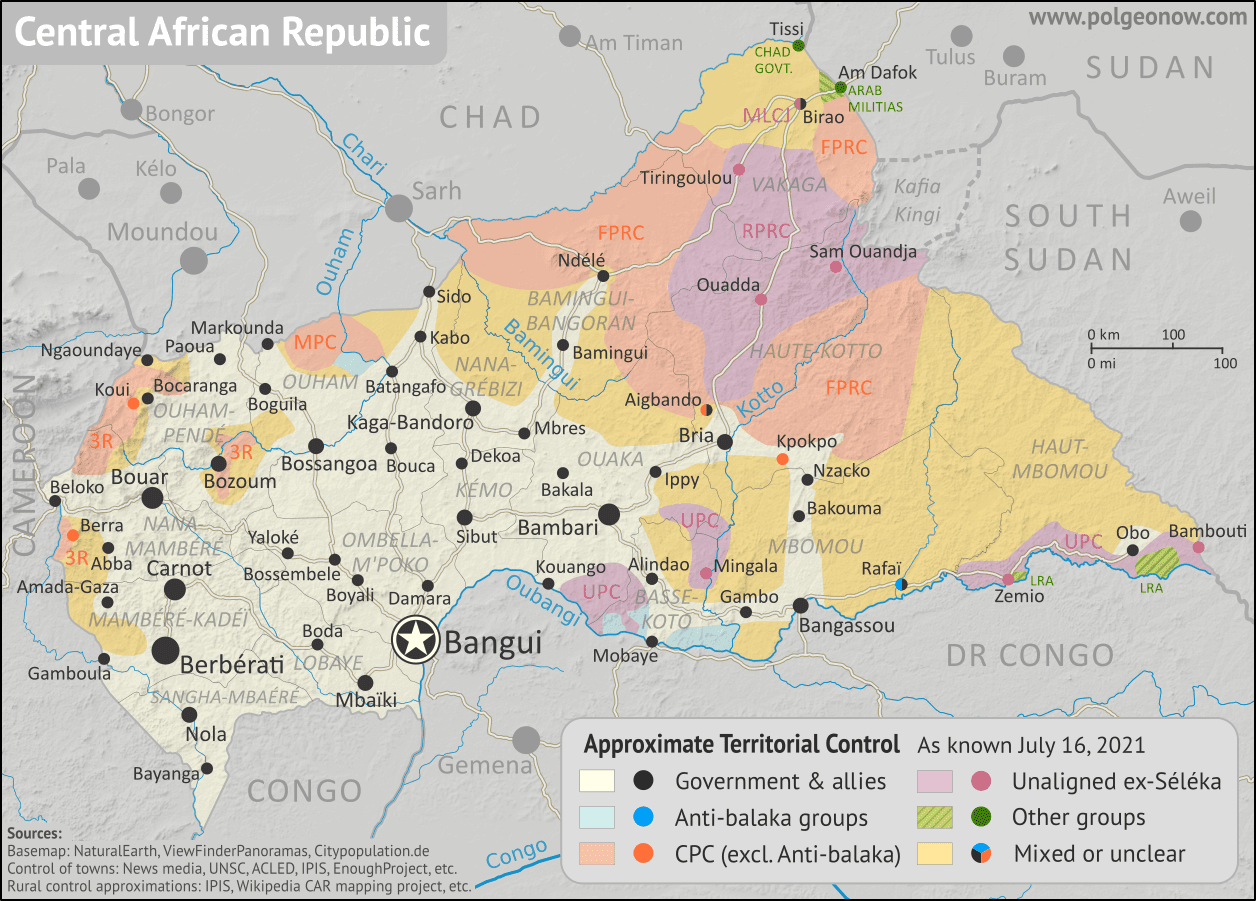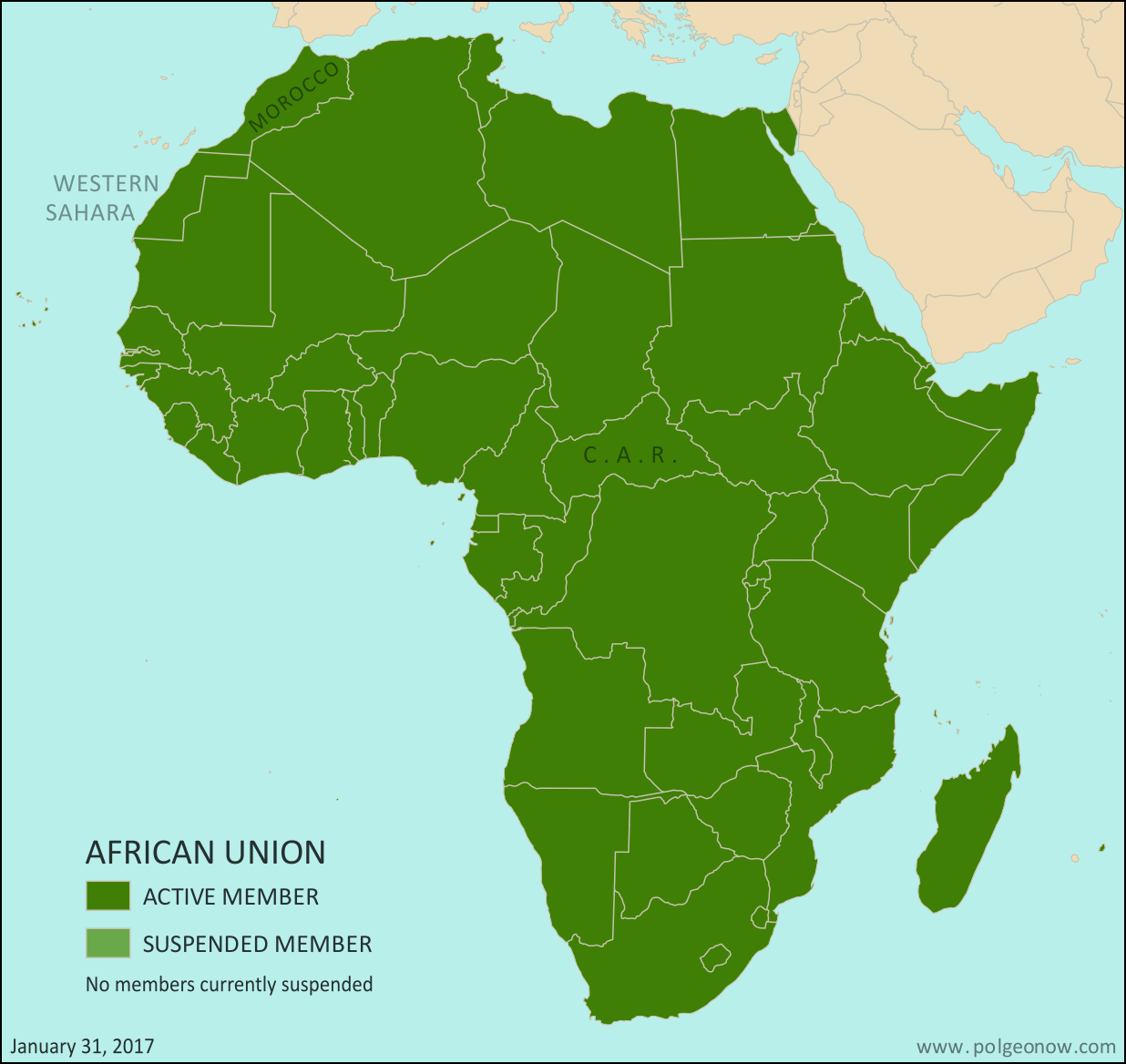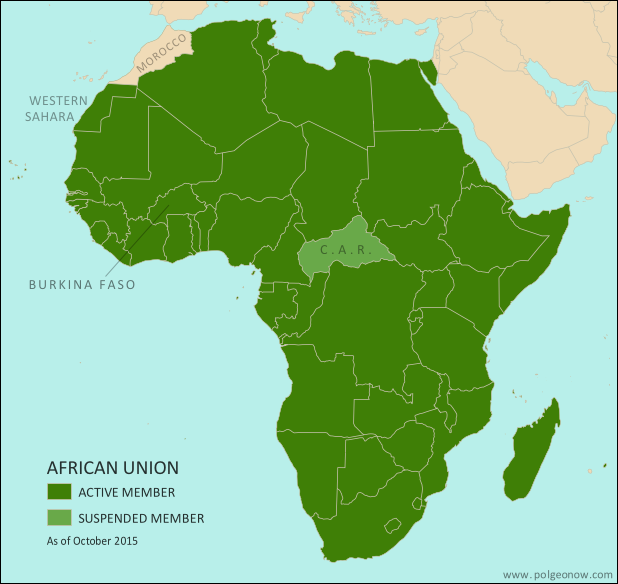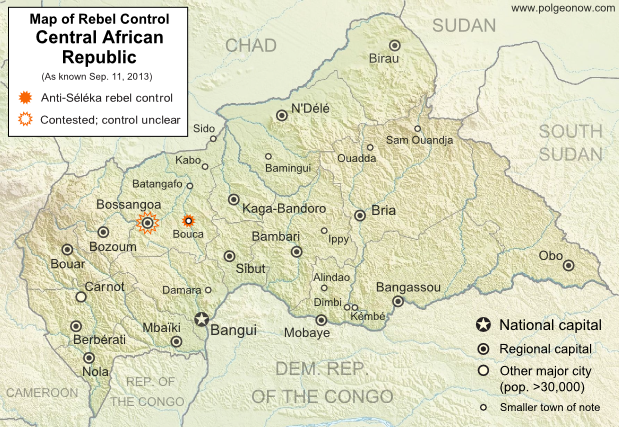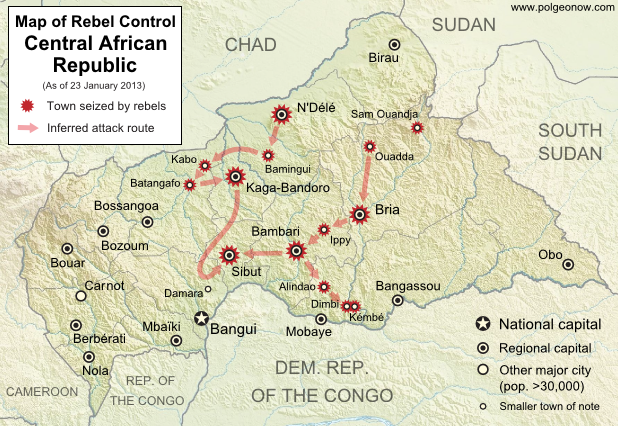SUBSCRIBERS CLICK HERE TO VIEW FULL ARTICLE AND MAP:
Old Portal (members.polgeonow.com) | New Portal (controlmaps.polgeonow.com)
(To see other maps of this conflict, view all Central African Republic articles on PolGeoNow.)
Research by Djordje Djukic, with additional reporting by Evan Centanni. Map by Evan Centanni and Djordje Djukic

Pro-government forces led by the Russian Wagner Group have accelerated their campaigns in the eastern CAR, carving out new chains of government-held towns deep inside the
once-rebel-dominated northeast. Meanwhile, the UPC, perhaps the country's most powerful rebel faction, has rejoined the larger anti-government coalition.
See all this and more on the latest update to PolGeoNow's concise, professional CAR control map, which includes a timeline of changes since our previous CAR map report of July 2021, with sources cited.
This map and report are premium content, available to paid subscribers of the PolGeoNow Conflict Mapping Service.
Want to see before you subscribe? Check out our most recent FREE SAMPLE Central African Republic control map!
Exclusive map report includes:
- Up-to-date illustration of current territorial control in the Central African Republic, color-coded for the government and allies, the CPC rebel coalition, "Anti-balaka" militias, and other rebel groups, with areas of uncertainty indicated. Colorblind accessible.
- Detailed indication of city-by-city control, including key towns and other locations important to current events
- Locations of recent control changes and other important events, including Tiringoulou, Ouanda Djallé, Nzakoundou, Nzacko, Kaita, and more
- Detailed timeline of important events and changes to territorial control since July 15, 2022, with links to sources.
SUBSCRIBERS CLICK HERE TO VIEW FULL ARTICLE AND MAP:
Old Portal (members.polgeonow.com) | New Portal (controlmaps.polgeonow.com)
Not signed up yet? Click here to learn more about our professional subscription service!
Can I purchase just this map?
This map and report are not available for automated purchase to non-subscribers. If you need access or republication rights for only this map report, contact service@polgeonow.com for options.

